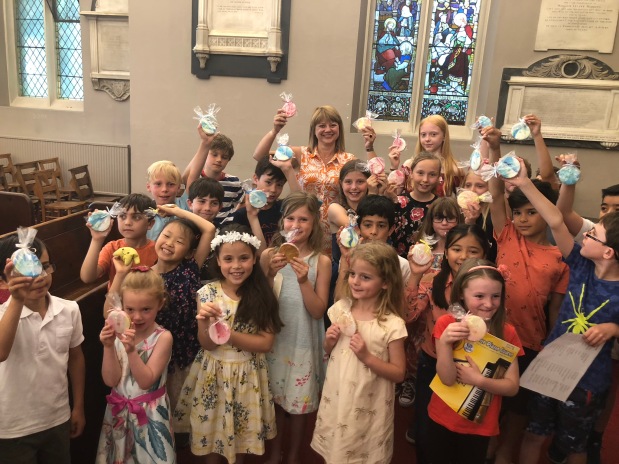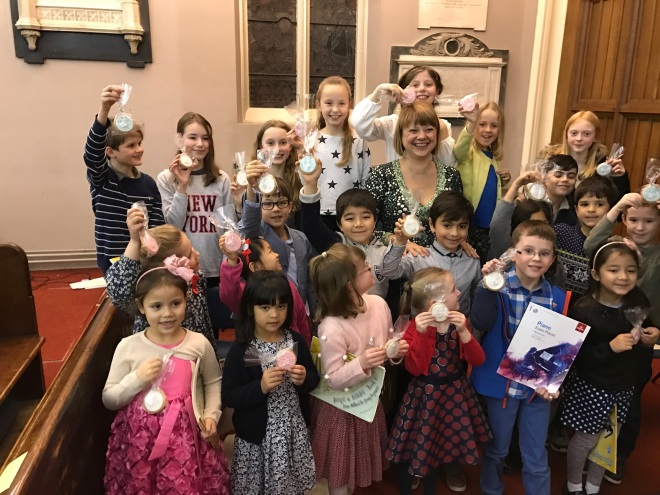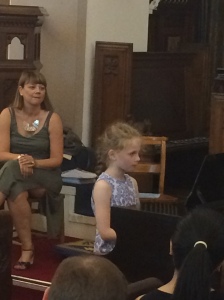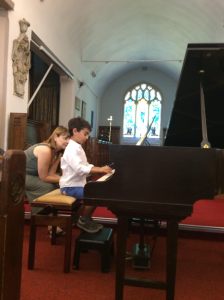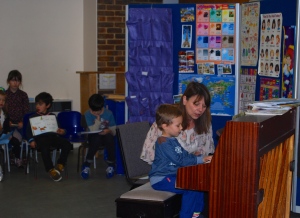 Scene 1: Adult student arrives to piano lesson. Nervous as she is due to perform her new piece. She had been working on it very hard and was able to play it fairly competently at home. She plays the piece for her teacher. More mistakes that she would have liked, but also better than she had thought it would be.
Scene 1: Adult student arrives to piano lesson. Nervous as she is due to perform her new piece. She had been working on it very hard and was able to play it fairly competently at home. She plays the piece for her teacher. More mistakes that she would have liked, but also better than she had thought it would be.
Teacher: So how did you feel about that performance?
Student: Ok, but I can play it much better at home. But I thought it may have gone worse. I wish I hadn’t made all those silly mistakes though – and I really thought I had ‘got’ those bars (pointing to page)
Teacher: That’s ok, you haven’t been working on it for very long, and those bars are tricky. It’s common when performing in front of someone that the weakest bits are those where there are problems.
Student: But I had worked on them so hard – hands separately, very slowly, even with my eyes closed. I really thought I had got them.
Teacher: Ok, let’s have a look at a few more suggestions….
Lesson continues with some insightful tips given by the teacher and the student returns home feeling pleased overall with her performance and keen to get back to those tricky bars and try the new suggestions…..
Scene 2: Adult student arrives to piano lesson. Nervous as he knows he will need to play the new piece he has been working on this week. He arrives at the lesson:
Teacher: Hi, how has your week been? How have you got on with the new piece?
Student: Not too bad but the last bars are really tricky, I can just about do them but I find them really hard. I think I may have some sort of mental block about them.
Teacher: Ok, well let’s hear the piece and then we can work through anything we need to
Student plays piece. It doesn’t go too badly, but – as he feared – he slips up on the last two bars.
Student: I’m frustrated – I thought I may just be able to get those last bars right – I got them right when I played it at home this morning.
Teacher: That’s ok, it’s often the way that you play in front of someone. And you played the piece very well overall. In fact, those last bars are really tricky – I think the composer may have done that deliberately to trip you up! Let’s break it all apart and really look at them.
Lesson continues – teacher demonstrates a few tips which can be used to avoid the slip-ups. Student plays through again with definite improvement. Feels overall pleased by the end of the lesson and keen to get home and try out the new tips.
Despite the similarity of these 2 conversations, the students in question are very different in terms of their experience. The first student is playing at a fairly advanced level and the piece in question was Debussy’s First Arabesque – a piece selected as part of a ‘Quick study’ project set by her teacher, Graham Fitch. The second student is an adult beginner, and this conversation took place in his third lesson. The piece in question was an adaptation of ‘Jingle Bells’ in the Alfred Adult Basic Piano Course.
You have probably already guessed that in the first conversation I was the student, and in the second I was the teacher. I am lucky enough to be able to study with Graham Fitch who is an international prize-winning pianist, teacher and adjudicator. (In fact, he writes about the ‘Quick Study’ project in his excellent blog ‘Practising the Piano’ here). I am often surprised and interested to observe how some of the issues I have as a relatively advanced student have parallels with my beginner pupils. The most common probably is “I play it so much better at home!” (I’m still not convinced Graham believes me when I tell him this….) I often find myself adapting a piece of advice, an exercise or practice tip that I have received from Graham and distilling it for one of my beginner pupils. In fact my pupils probably don’t realise how lucky they are to have a bit of Graham Fitch thrown into their lessons for the price of one Rebecca Singerman-Knight!
As well as issues surrounding the performance of pieces in lessons, another area of commonality is around the development of ‘muscle memory’ in working with difficult passages. I am currently working on the second movement of Schubert’s D850 Sonata and there are some tricky passages which just didn’t seem to be ‘sticking’ – a combination of some complex chords in the left hand and flighty ornamental-type passages in the right hand. Graham advised me to really focus on the left hand but – rather than play it on its own – ‘mime’ the right hand at the same time so as not to forget what the right hand needs to do, but to allow the left hand to fully sound and therefore better embed itself in my memory. And so far so good, the passage is improving! Similarly I often encourage my students to really focus on getting the left hand solid – whether playing just chords as an accompaniment or more tricky harmonies and counter-melodies etc.
On the subject of chords, Graham has some great exercises for working with these and encouraging the hand (and wrist and arm) to ‘remember’ quite complex chord positions (there is a video of him discussing this here). My adult beginners are working through the Alfred Adult course which introduces tonic and dominant 7th chords very early on. They often find the hand position of the 7th chords quite uncomfortable, particularly when they involve the 4th finger as that is the weakest, and not a finger that many non-pianists are used to using. Adapting and simplifying the tips I have received from Graham, I encourage them to work on exercises to get their hands comfortable, not only with the 7th chord, but also with the transition between the tonic and & 7th so that they are set-up for many of the pieces they will learn in the early stages of their learning (as well as being able to play almost every pop song ever written!) These exercises are also a good opportunity to encourage a good and relaxed and posture and to use the whole arm – flexibly, not stiffly – in their playing.
As readers of my blog will know, as well as working with adult beginners I also specialise in early years’ teaching. Even with three and four years-olds I have noticed some parallels between my own development as a pianist and the very early stages of piano learning. Like in so many things when working with very young children, when encouraging good posture and arm / wrist technique at the piano, the best way to communicate is through the use of metaphor. Graham is a great believer in metaphor in his teaching, and one of his that I have adapted for my early years’ teaching is that of the elephant trunk – i.e. a pianist should use the arm as an elephant trunk – strong, yet flexible. (I write more about this in my guest post on Frances Wilson’s teaching blog here).
I can only stretch the parallels so far, however. Most are between my own lessons and those of my adult beginners – rather than the early years’ children. I have yet to turn up to a lesson and have Graham ask me to find all the dogs on the piano…….



